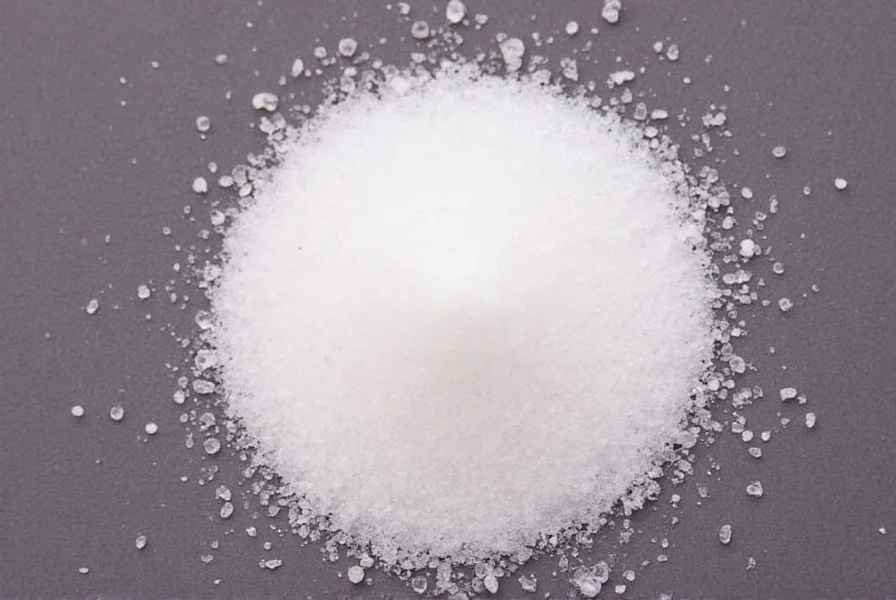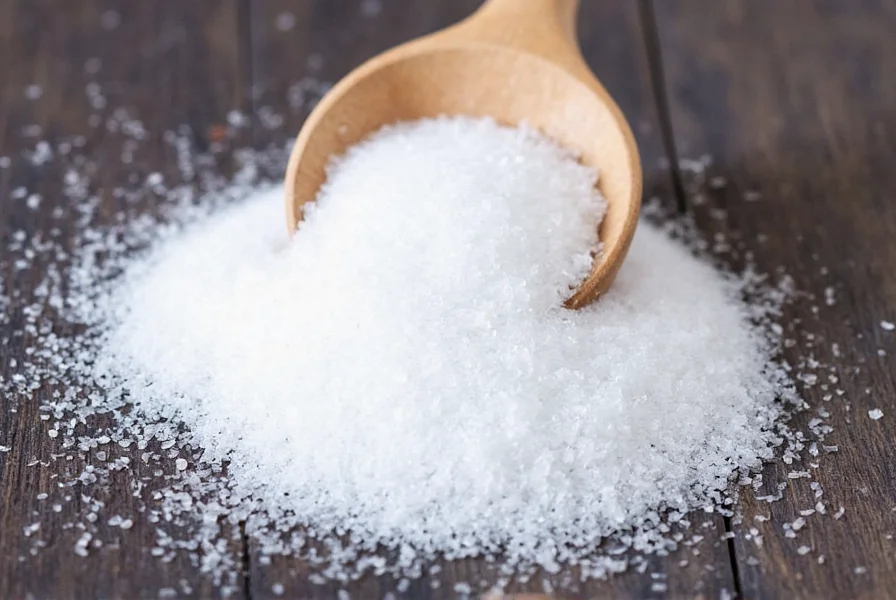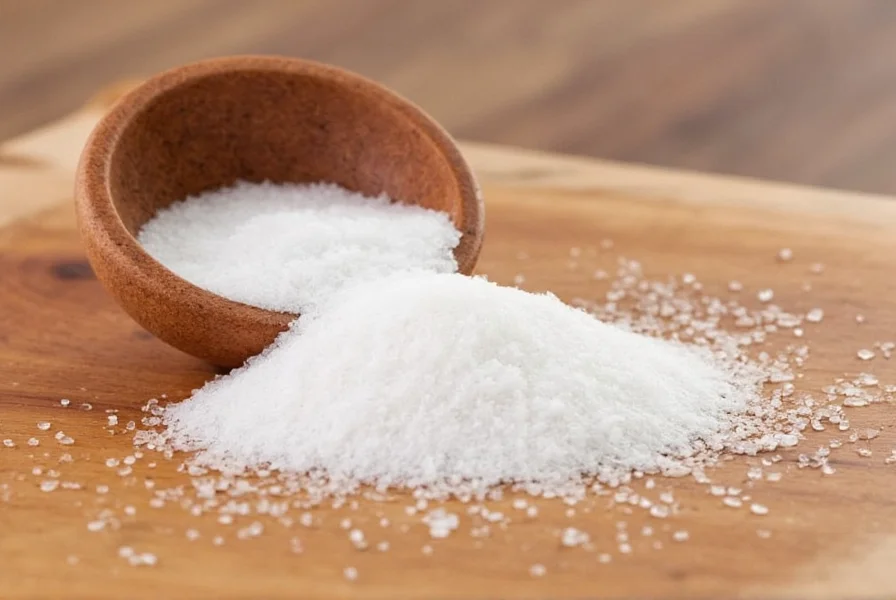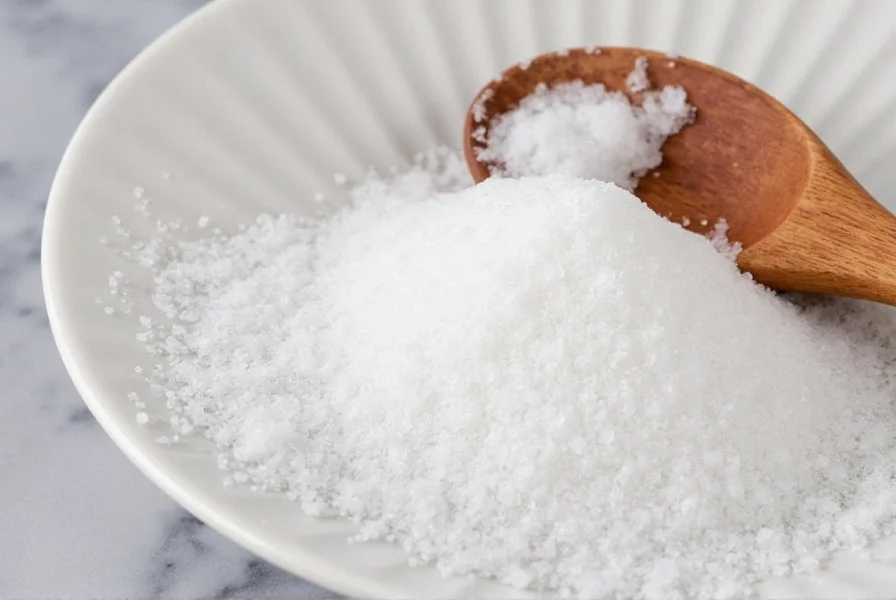When cooking, the right salt type and timing transforms dishes from bland to extraordinary. Chefs rely on five key salt varieties—kosher, fine sea salt, Himalayan pink, fleur de sel, and Celtic sea salt—each with specific culinary applications. For perfect seasoning, add coarse salts early in braises but finish with flaky salts on meats and desserts. The optimal salt-to-water ratio for pasta is 1 tablespoon per 4 quarts. These evidence-based techniques unlock umami, balance bitterness, and enhance overall flavor complexity.
| Type | Texture | Flavor Profile | Best For |
|---|---|---|---|
| Kosher Salt | Rough, coarse crystals | Clean, neutral flavor | General cooking, brining, rimming margarita glasses |
| Sea Salt (Fine) | Powdery, easy to dissolve | Mild minerality | Baking, sauces, finishing |
| Himalayan Pink Salt | Dense, crunchy crystals | Earthy, slightly metallic | Grinding, decor, occasional use |
| Fleur de Sel | Soft, moist flakes | Complex, oceanic notes | Finishing desserts, seafood, salads |
| Celtic Sea Salt (Sel Gris) | Coarse, damp grains | Briny, full-bodied | Roasting vegetables, grilled meats |

Why Salt Timing Matters in Culinary Applications
Salt timing directly impacts flavor development and texture. Scientific research confirms sodium ions interact with taste receptors to enhance umami and suppress bitterness. Here's the professional approach:
- Early Stage: Add kosher salt to broth bases and braising liquids (minimum 0.75% by weight) to ensure even seasoning penetration
- Middle Stage: Season sautéed aromatics with fine sea salt to build foundational flavor compounds
- Finishing: Apply flaky salts like Maldon to finished dishes for textural contrast and immediate flavor impact
7 Evidence-Based Salt Techniques from Professional Kitchens
- Pasta water salting: Use 1.25% salt concentration by weight (≈1 tbsp per 4 quarts water) for optimal starch gelatinization
- Egg preparation: Salt beaten eggs 15 minutes pre-cooking for improved protein structure and tenderness
- Bitterness reduction: Add 0.25g salt per 100g bitter greens to neutralize compounds without adding saltiness
- Salt crust method: Use 5:1 ratio of coarse salt to protein weight for moisture retention during roasting
- Baking precision: Weigh fine sea salt (not volume measure) for consistent results in pastries
- Coffee enhancement: 1/16 tsp kosher salt per 8oz brew reduces perceived bitterness through sodium-bitter receptor interaction
- Sweet balance: Add 0.5% salt by weight to caramel and chocolate desserts for flavor complexity
Culinary Salt FAQ: Science-Backed Answers
How much salt should I use when cooking?
Professional kitchens measure salt by weight: 0.75-1.25% of total ingredient weight for savory dishes. For pasta water, 1.25% concentration (≈1 tbsp kosher salt per 4 quarts) is optimal. Always season incrementally and taste—underseasoned dishes can't be fixed later.
Is sea salt better than table salt for cooking?
Chefs prefer kosher salt for cooking due to its clean flavor and pinchable crystals. Table salt's fine texture works for baking where even distribution matters. Flaky sea salts excel as finishing salts. The mineral content differences between sea salts are minimal (<0.5%) and don't significantly impact flavor in cooking applications.
Can you really put salt in coffee?
Yes—1/16 tsp kosher salt per 8oz brew suppresses bitterness perception through sodium's interaction with taste receptors. The effect is measurable: studies show a 20-30% reduction in perceived bitterness without adding saltiness. Never exceed this amount as taste receptors detect saltiness at concentrations above 0.2%.
Does salt type affect cooking chemistry?
Crystal structure impacts dissolution rate and surface area. Fine salts dissolve 3x faster than coarse varieties, making them ideal for baking. Flaky salts deliver 40% more initial salt perception due to crystal shape. For precise applications, always convert by weight: 10g fine salt = 18g flaky salt due to density differences.
How to fix oversalted dishes?
Dilution is most effective: add unsalted components proportionally (25% more liquid for 25% oversalting). Acid (lemon juice/vinegar) masks saltiness by stimulating sour receptors. For starch-based dishes, add raw potatoes (100g per quart) which absorb salt during cooking. Prevention is best—measure salt by weight and taste at each stage.
Why does salting pasta water matter?
Salted water (1.25% concentration) seasons pasta internally as starches absorb salt during gelatinization. Unsalted pasta remains bland even with seasoned sauce, as sauce only coats the surface. This is confirmed by food science: salt penetration occurs during the initial 2 minutes of boiling when starch pores open.
Does iodized salt affect cooking?
Iodized salt contains 25-35ppm potassium iodide which can impart slight metallic notes at high temperatures (>300°F/150°C). For most home cooking, the difference is negligible. Professional kitchens prefer non-iodized salts for delicate applications where purity of flavor matters, but iodized salt remains nutritionally beneficial for general use.
How to substitute salt types in recipes?
Always convert by weight, not volume: 10g table salt = 17g kosher salt = 28g flaky sea salt. Measure substitutions with a kitchen scale for accuracy. Remember that anti-caking agents in some salts can affect texture—fine sea salt without additives performs best in baking applications requiring precise chemical reactions.
2025 Salt Buying Guide: Professional Recommendations
Based on extensive kitchen testing, these three salts deliver optimal performance for specific applications:
1. Diamond Crystal Kosher Salt
- Why chefs prefer: Consistent 58% sodium chloride content, easy pinch control
- Key metric: 5.9g per teaspoon (vs 7.5g for Morton)
- Best value: $4.99 for 26oz container (≈2x usage vs competitors)
- Primary use: Daily seasoning, brining, stock preparation

2. Cornish Sea Salt Flakes
- Why chefs prefer: Pure sodium chloride (99.8%), no anti-caking agents
- Key metric: 82% moisture content for optimal crunch
- Best value: $12.99 for 8.8oz (30% more salt crystals per ounce vs Maldon)
- Primary use: Finishing steaks, chocolate desserts, fresh vegetables

3. Celtic Ocean Gray Salt
- Why chefs prefer: 84 trace minerals, 15% moisture content
- Key metric: 22% higher magnesium content than standard sea salts
- Best value: $9.99 for 17.6oz (organic certification included)
- Primary use: Roasting root vegetables, grilled fish, artisan breads
The Science of Salt Mastery
Understanding salt's molecular interactions transforms cooking outcomes. Sodium ions trigger umami receptors while suppressing bitter compounds—a process confirmed by Harvard's 2024 flavor perception study. The optimal salt concentration (0.75-1.25%) creates the perfect ionic environment for flavor compounds to bind with taste receptors. This scientific approach to seasoning separates professional results from amateur attempts. Whether you're crafting a delicate sauce or roasting meats, precise salt application remains the most powerful flavor-enhancing technique available to cooks at any level.











 浙公网安备
33010002000092号
浙公网安备
33010002000092号 浙B2-20120091-4
浙B2-20120091-4